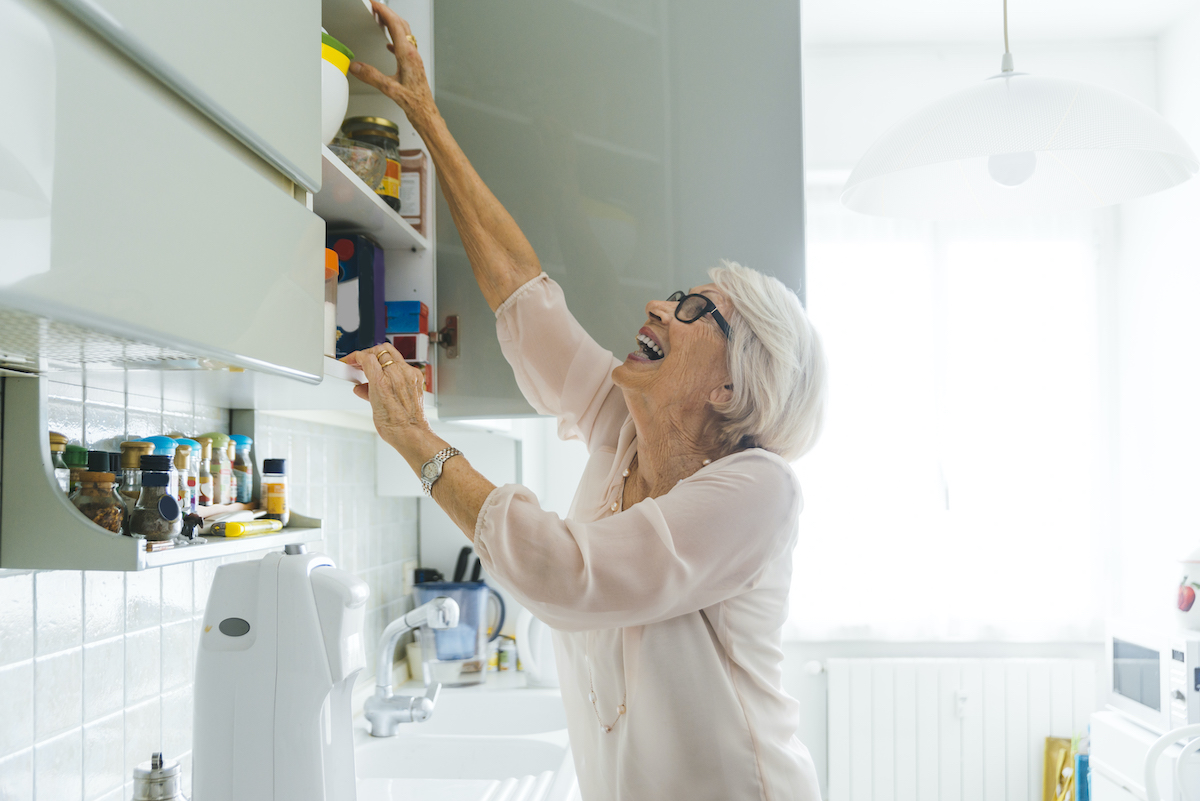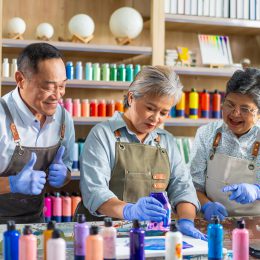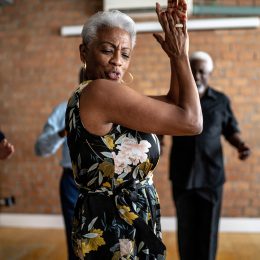9 Small Projects That Make Your Home Much Safer
Prevent falls, fires, and more with these quick fixes from injury–prevention experts.

Your home should be your sanctuary, a place where you feel safe and comfortable. But the reality is that more than half of all injuries happen at home, according to the National Safety Council.
Falls are a common concern for older adults. In fact, one in four Americans age 65 or older will fall this year, according to the Centers for Disease Control and Prevention (CDC). Other top worries include house fires, scalds or burns, and muscle strains.
What do these things have in common? They’re often preventable. To help make your home the safe haven it should be, check out the nine DIY projects below, all recommended by injury-prevention experts who specialize in working with older adults.
Home Project #1: Add Night-Lights in Your Bedroom, Hallway, and Bathroom
If you get up in the middle of the night to go to the bathroom, make sure you have a well-lit path to lower your risk of falling, says Kate Ayoub, D.P.T., a physical therapist and health coach based in Washington, D.C.
That usually means placing night-lights in your bedroom, hallway, and bathroom, so that the floors and doorways are illuminated. Simple plug-in lights are a great option: They’re affordable, easy to install, and just bright enough to keep you safe without jolting you (or your partner) awake.
Home Project #2: Give Your Bathroom This Four-Item Upgrade
Everywhere you look in the bathroom, there’s another fall hazard. That’s why experts recommend the following four essentials for older adults:
- Handheld showerhead
- Shower chair
- Grab bar
- Raised toilet seat
To start, focus on the changes you can make in your shower. “I tell my older patients to use a handheld showerhead and a shower chair,” says Maria Ranin-Lay, M.D., a physician specializing in geriatric medicine at Crystal Run Healthcare in Monroe, New York. “That way, you can shower from a seated position and avoid slipping.”
Installing grab bars inside or just outside the shower can also help steady your movement and make it easier to get in and out, she says.
Next, turn your attention to your toilet. “We see a lot of injuries occur when patients struggle to get up from the toilet because there’s nothing to grab onto,” Dr. Ranin-Lay says. She recommends purchasing a raised toilet seat with handlebars on the sides, which you can find at many pharmacies or medical supply stores. Depending on the setup of your bathroom, you can also install a grab bar near the toilet.
Home Project #3: Replace Round Doorknobs with Door Levers
Traditional round doorknobs can be difficult to turn for people with arthritis or tendonitis, Dr. Ranin-Lay says. Door levers—like the kind you see on French doors—are much easier to operate. Your local hardware store should have door levers in stock, and most use a hole that’s the same size as the one for a standard doorknob, so it’s an easy swap to make.
Home Project #4: Install Handrails on Both Sides of the Stairs
Handrails are a great tool for providing support on the stairs. Some people prefer to hold the railing with their dominant hand, while others feel steadiest grabbing onto a handrail with each hand.
Whatever your preference, handrails on both sides will give you options and can help limit your risk of falls, says Lora Stutzman, D.P.T., a physical therapist at Johns Hopkins Medicine in Odenton, Maryland.
Hardware stores sell handrails and brackets to secure the rail to your wall. Installation can be a bit tricky, though, so recruit a family member, friend, or neighbor to help you out. Be sure to use a stud finder to ensure that your brackets are securely anchored to the wall.
Home Project #5: Place Heavier or Frequently Used Kitchen Items on the Counter
Items placed on the floor or a high shelf—what physical therapists refer to as your “end ranges”—are the most difficult to pick up and can lead to muscle strains, Ayoub says. It’s easiest to lift items when they’re located between your shoulders and hips. That makes the kitchen countertop the sweet spot for most people when storing heavier items such as a stand mixer or Instant Pot.
Home Project #6: Check Appliances for Frayed Cords
The electric cords on the appliances we use the most, such as coffee pots and hairdryers, take a beating. Over time, the cords can fray, and wires that were once insulated can become exposed and cause a house fire, says Elaine Rockoff, L.C.S.W., senior director of care and case management services at JASA, an agency providing services to older adults in New York City.
Every few months, check your appliance cords to make sure they’re in good working order. If you notice frayed cords, call an electrician or consider replacing the appliance.
Home Project #7: Move Electric Cords Out of Walkways
Subscribe to our newsletter
It's quick and easy. You could be one of the 13 million people who are eligible.
Already a member? Click to discover our 15,000+ participating locations.
Follow Us
Speaking of electric cords: Place them behind furniture and along the walls, rather than in walkways where they will be tripping hazards, says Lakelyn Hogan, Ph.D., a gerontologist and caregiver advocate at Home Instead, a global provider of in-home care services for older adults.
If you aren’t able to move a power cord out of the way, secure the cord to the floor using gaffer tape, which is more visually appealing than duct tape and won’t leave behind any residue when removed.
Home Project #8: Secure Throw Rugs
Just like electric cords, throw rugs can be a tripping hazard. “To avoid unnecessary risks, seniors should remove throw rugs or use double-sided carpet tape or a rug pad to secure the rug to the floor,” Hogan suggests. In addition to preventing slipping and tripping, this also makes vacuuming much easier.
Home Project #9: Adjust the Hot Water Heater Thermostat
Do you ever turn on your faucet or shower and find that the water coming out is unbearably hot? Hot water heaters have thermostats to regulate the maximum water temperature. Hogan recommends setting your thermostat to 120 degrees max to avoid dangerously hot water that could cause scalds or burns.
Most water heaters have a sticker on them that explains how to set the temperature, but if you can’t find it (or the owner’s manual), try this technique:
- Run hot water at the tap closest to the water heater for at least three minutes.
- Fill a glass and check the temperature using a kitchen thermometer.
- If the water is above 120 degrees, adjust the dial, wait about three hours, and check again.
- Repeat until you get water that’s 120 degrees.
Once you find the correct setting, make a mark on the dial, so that you don’t have to go through this testing process again.
Check Your SilverSneakers Eligibility Instantly
SilverSneakers members can go to thousands of gyms and fitness locations across the nation, plus take SilverSneakers LIVE online classes that are designed for seniors of all levels. If you have a Medicare plan, it may include SilverSneakers—at no additional cost. Check your eligibility instantly here.
Not eligible for SilverSneakers? You can still get 200+ free SilverSneakers On-Demand videos and stay in touch with us by creating your online account.




